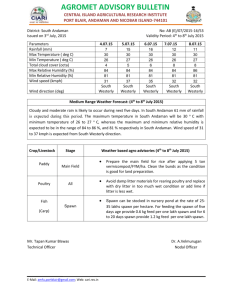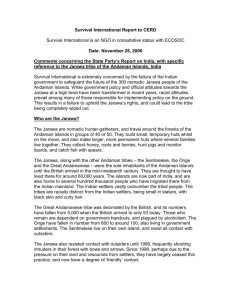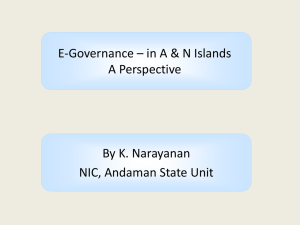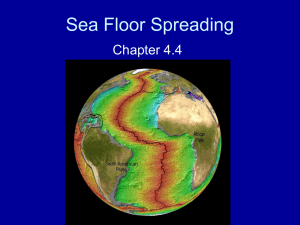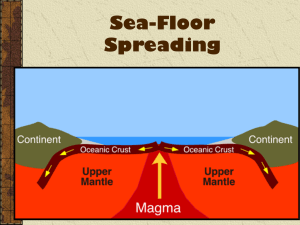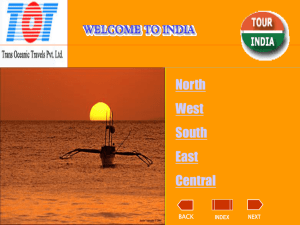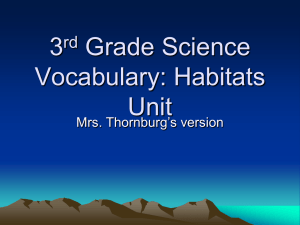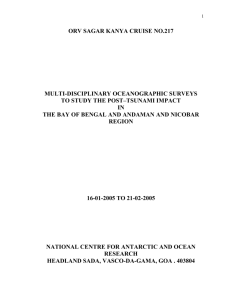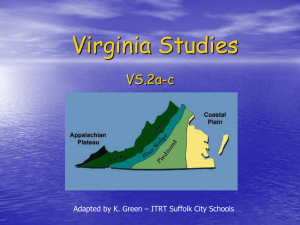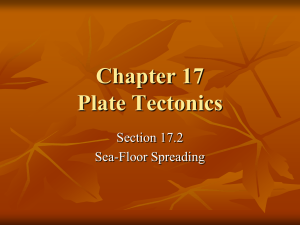tectonic history in the andaman sea
advertisement
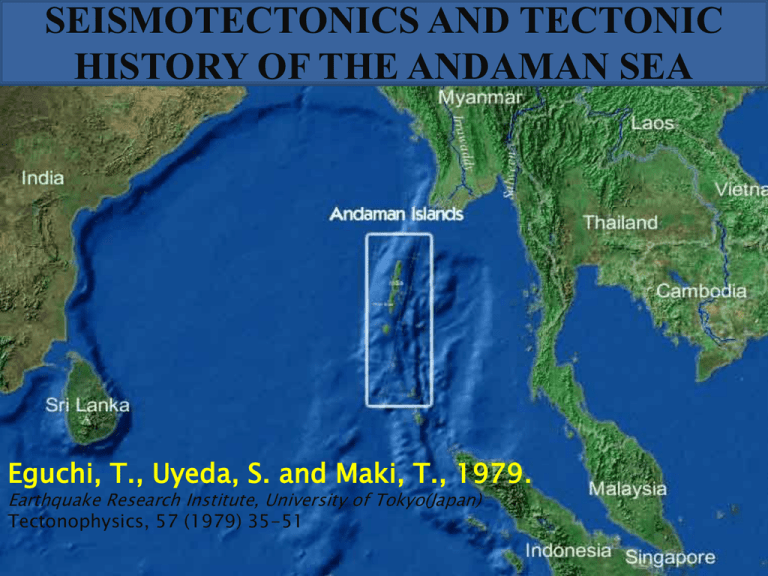
SEISMOTECTONICS AND TECTONIC HISTORY OF THE ANDAMAN SEA Eguchi, T., Uyeda, S. and Maki, T., 1979 . Earthquake Research Institute, University of Tokyo(Japan) Tectonophysics, 57 (1979) 35-51 INTRODUCTION The Andaman sea is an active spreading – arc basin. In the eastern side of this island the mid-oceanic ridge migrate towards northward the Ninety-East ridge collide with the western end of the old Sunda trench in the middle or late Miocene (10-20 m.y.B.P). This phenomenon creating a tremendous stress release in the back arc area. The northward movement of the Indian plate and its collision with Euration plate exert a drag in the back arc region causing the opening of Andaman sea. This ocean basin formed by a oblique extensional rifting. In this paper Author examine the seismicity and present tectonism in the Andaman sea region. And he try to correlate the spreading of eastern Indian-ocean and the northward movement of Great India. Karig 1971 divided back arc basins in to two. 1. Active marginal basins. 2. Inactive marginal basins. Geomorphic and seismic evidences of this area shows that active extension is taken place along the central Andaman(Fitch 1972). Mid-oceanic ridge migrate towards northward the Ninety-East ridge collide with the western end of the old Sunda trench. Northward movement of the Indian plate and its collision with Euration plate exert a drag here. Sunda trench Seismicity From Jan-1964 to Dec-1973 scientist examine the all earthquakes >4.5 between the latitudes 0 ̊ N and 20 ̊ N and longitudes 90 ̊ E and 100 ̊ E. All the epicenters are more in the concave-side of the Andaman arc(fig-1). This may due to the highly oblique subduction of Indian plate in the Andaman sea. All the epicenters are narrow down to wards the back arc tectonic zone and having a trend of NNE-SSW in the north Andaman sea. This seismic zone playing an important role for the spreading of Andaman sea. The rectangle showing the central Andaman sea rift valley during the study period a few earthquake occurred in this area (mb4.5) Deeper earthquake >150km occurred twice in the south during the study period. The northern Andaman experiencing comparatively shallower earthquake than south Andaman. Rectangle section from the previous fig, scientist make an E-W-vertical cross section according to the latitudes and the depth of the earthquake.(11̊ N and 13̊ N) Hear we can able to see the two seismic belts TECTONIC HISTORY IN THE ANDAMAN SEA Greater India's northward movement from Australia Other recent tectonic movement mentioned in the previous part. From the magnetic anomalies we getting the information about the age of ocean bottom Eastern part of Ninety east ridge increases southward while that the western part of this ridge increases northward (Sclter and Fisher 1974). This ridge is the active right lateral transform fault (between 53-32 my) By (Sclter and Fisher 1974). On the other hand the Stein and Okla. 1978 suggest small left lateral movement Any way the models prepared by Tapponnier and Molnar (1975) supposing there was little relative movement either side of the ridge. For example in the given figure showing the 20 ̊clockwise rotation of the Sumatra around the center of Sunda strait (Point ‘C’). Spreading might have arrive at the point ‘B’ and at point ‘A’ rotation of Sumatra started(15my). This process completed at 10 my at this time the spreading of the Andaman sea started. Conclusion: The stage that the Andaman sea is appeared in between Burma and west Sumatra as a combined result of ridge subduction and collision with India and Asia The former and the later collision probability start at about 20-10 and 30-10 m.y. B.P., respectively. This all theories what ever proposed by the authors in this paper similar to the theory proposed by Alfred Wagner in his classic book “Continental drift”.
